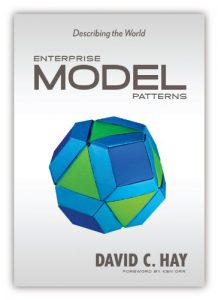“This book presents the most comprehensive treatment of high-level abstractions I've seen. Any event, business, and/or systems analyst should have this book available, both as a learning text and as an indispensible reference book. The knowledge packed away in this book takes decades to acquire and gestate. We are all fortunate to have it in a single volume.”
James Odell
Co-chair, OMG - Analysis and Design
"UML and SoaML" Task Force
"David addresses a key, difficult, challenge for data modelling (and ontology) in this book - extracting the common pattern that underlies and unifies the variety of real data models that people use. And, what is almost as important to many readers, he does this in a clear and understandable way."
Chris Partridge
Chief Ontologist, The BORO Centre
"A great data model, one that lays the essence of a business bare, is a thing of beauty. It simplifies process, eases communication, and brings order to chaos. A great data model serves for a lifetime. Powerful stuff, this."
Tom Redman, President
Navesink Consulting Group, LLC
"Finally, choosing a level of abstraction for a data model is addressed methodically. David should be applauded for grasping this thorny issue and producing a wonderfully readable book. Every data modeler should have one".
Cliff Longman, President
Adaptable Data
In 1995, David Hay published Data Model Patterns: Conventions of Thought - the groundbreaking book on how to use standard data models to describe the standard business situations. Enterprise Model Patterns: Describing the World builds on the concepts presented there, adds 15 years of practical experience, and presents a more comprehensive view.
This model addresses your enterprise via four levels of abstraction:
Level 0: An abstract template that underlies the Level 1 model, plus two meta models: Information Resources and Accounting. Each of these itself represents the rest of the enterprise, so to model it is to “model a model”, so to speak.
Level 1: An enterprise model that is generic enough to apply to any company or government agency, but concrete enough to be readily understood by all. It describes people and organizations, geographic locations, (physical) assets, activities, and time.
Level 2: A more detailed model describing specific functional areas: facilities and other addresses, human resources, communications and marketing, contracts, manufacturing, and the laboratory.
Level 3: Examples of the details that can be added to a model to address what is truly unique in a particular industry. Here you see how to address the unique bits in areas as diverse as criminal justice, microbiology, banking, oil field production, and highway maintenance.



